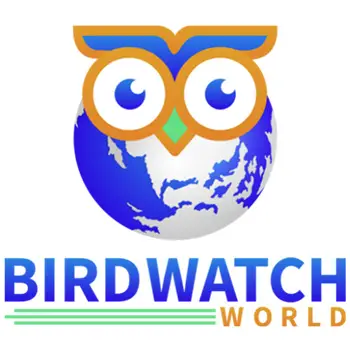We see them in our towns, cities, and backyards, small birds fluttering about picking at seeds. They chase around after insects and worms also. So are small birds herbivores, carnivores, or omnivores? Here at Birdwatch World, I am going to use my knowledge of birds to answer this question for you.
As a whole, most small birds are omnivores; they eat a variety of animal and plant matter. Common bird feeder visitors such as Finches, Chickadees, Sparrows, Goldfinches, and Nuthatches eat seeds, insects, and insect larvae. No small birds are carnivores, though one does drink the blood of other birds.
In the remainder of this article, we’re going to explore the dieting habits of small birds that commonly visit feeders. Small birds are remarkably adaptable in their diets, changing them to suit the seasons and availability of foods. We will also discover more about that blood-sucking bird from the Galapagos.
What Exactly Do Small Birds Eat?
Disclaimer – here at Birdwatch World I do not support the feeding of wild birds. Feeding wild birds can lead to malnutrition, negative behavioral changes, imbalances in species populations, and other unfavorable occurrences. I do however respect your decision to feed them if you decide to do so.

As I mentioned above, small birds are what are called omnivores which means they eat foods of both plant and animal origin. But what exactly do they eat?
Let’s explore the diets of some common birds to see just what they consume…
Are small birds smart? Find out in this article here on my blog.
House Finches
House Finches are common across much of North America. These remarkably adaptable birds are found in nearly all landscapes and climates.
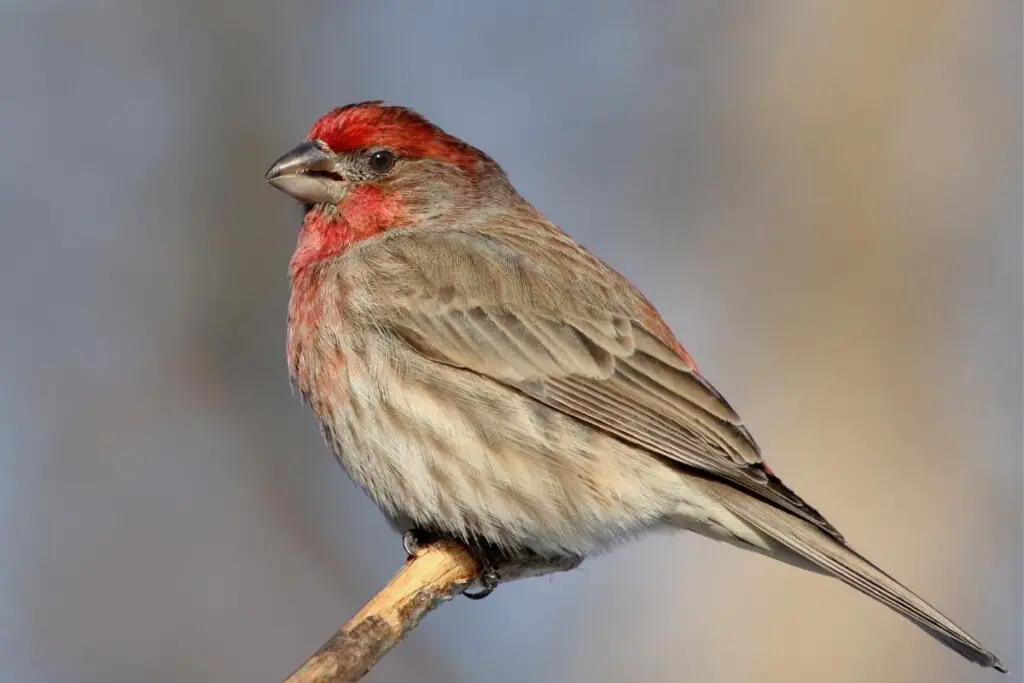
Throughout all seasons of the year, these birds will eat seeds, fruits, buds, flowers, and leaves. When they are nestlings, they are also fed fly larvae.
At feeders, these birds prefer small black oil sunflower seeds, hulled sunflower seeds, safflower, and nyjer. They will also enjoy ripe mulberries if you can spare them.

In Hawaii, House Finches are known as papaya birds because of their fondness for that particular tropical fruit. They also enjoy banyan and guava but papaya is their go-to fruit.
Black-capped Chickadee
Black-capped Chickadees are one of the most widespread and familiar birds in North America. They are brazen little things that visit feeders frequently and will also eat from your hand without care.
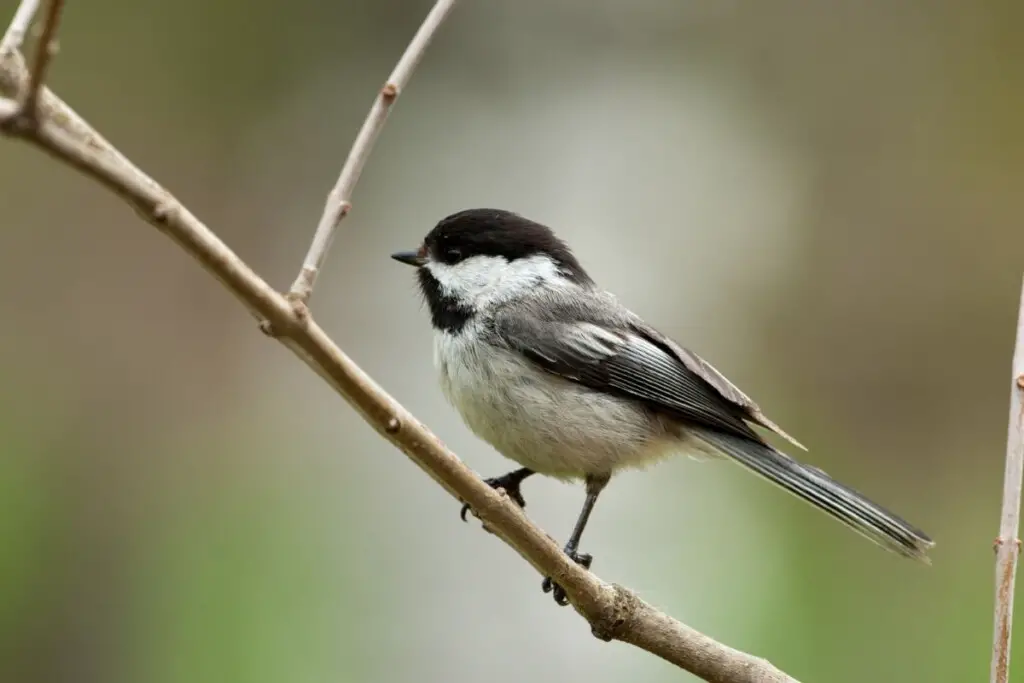
The diet of Black-capped Chickadees in the wild consists of 50% insects and spiders and 50% seeds and berries during the winter months.
In the breeding season, they change to 80-90% insects (mainly caterpillars) and some seeds and fruits.
At feeders, Chickadees will eat black oil sunflower seeds, hulled sunflower seeds, whole peanuts, suet, safflower, nyjer seed, and even mealworms.

Believe it or not, Black-capped Chickadees have been reported to eat the eggs of other birds. They’re still really cute, so I forgive them.
Chipping Sparrow
No matter where you are in North America, you should recognize this bird. Chipping Sparrows are very common and widespread.
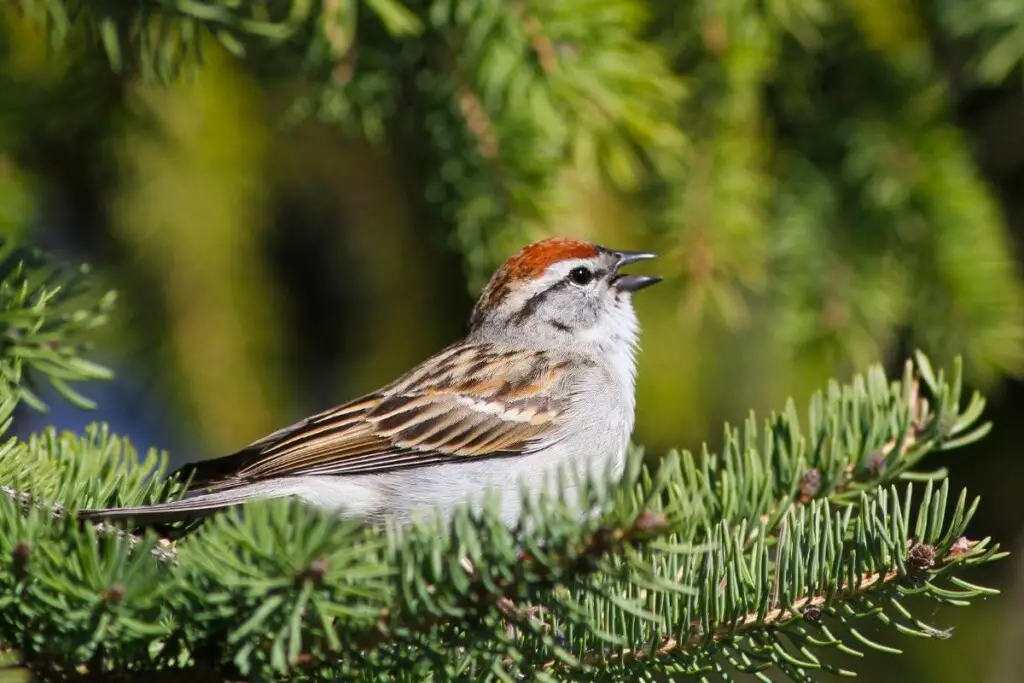
Chipping Sparrows will feed on the seeds from grasses and a variety of annual plants. Occasionally they will also eat small fruits.
When breeding, like most small birds, they add insects and other invertebrates to their diet for an added boost of energy.
Explore 20 small American birds here in this post on my blog
In the summer and early fall, their diet is 62% plant matter and the remainder is made up of insects and invertebrates.
Chipping Sparrows will eat hulled sunflower seeds, nyjer, cracked corn, millet, and milo when at your feeder.

Chipping Sparrows feed in large “rolling” flocks where birds constantly swap the front position to feed as the remainder of the flock flies over them.
American Robin
The American Robin is the most abundant and possibly the most recognizable thrush in North America.
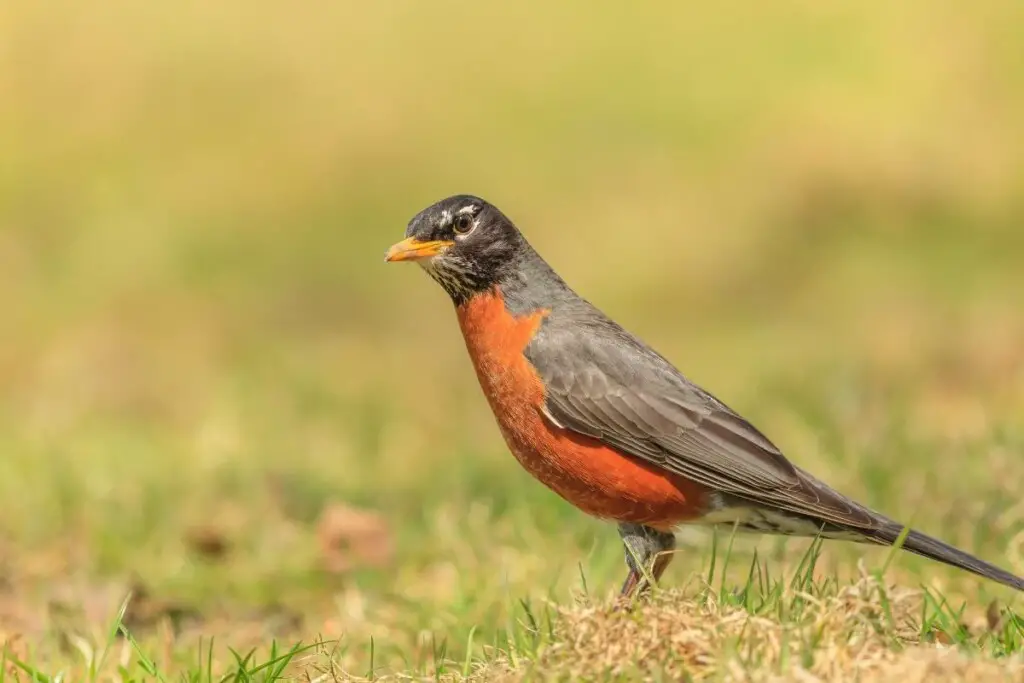
American Robins eat invertebrates and fruit in the wild. They love to drag a nice worm from moist soils and will run in quick spurts to catch faster invertebrates.
When catching larger insect prey, they will often hold the insect in their beaks and then beat them on the ground or some other hard surface to immobilize them before swallowing.
At a feeder, American Robins will take hulled sunflower seeds, suet, peanut hearts, fruit, and mealworms.

American Robins will eat the poop of their young in the nest to keep it clean. Sometimes they fly off with it and discard it elsewhere but occasionally they will swallow it.
Watch a video of American Robins doing this in this article here on my site – if you dare
Tufted Titmouse
The Tufted Titmouse is a year-round visitor to backyard bird feeders in eastern North America. Their little gray mohawks and black foreheads are unmistakable.
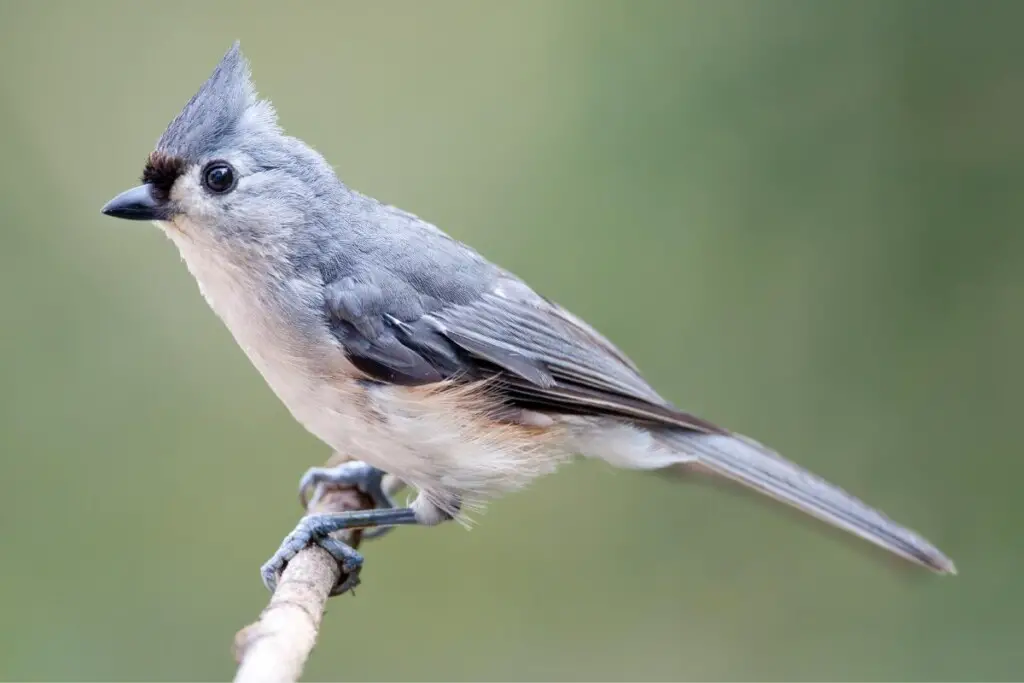
In the wild, Tufted Titmice will eat assorted insects, seeds, and fruits. One of their common feeding behaviors is hammering acorns and seeds held under their feet until they are broken up enough to eat.
At the feeder, Titmice are not fussy. They will take black oil sunflower seeds, hulled sunflower seeds, safflower, nyjer, suet, whole peanuts, peanut hearts, and mealworms.
Can birds eat bread? It’s a tricky question. Find out the answer in this article
Some of the insects they eat in the wild include caterpillars, cotton-boll weevils, ants, wasps, bees, stink bugs, treehoppers, scales, and flies. Eggs of cockroaches and katydids can also be on the menu, as well as spiders and even snails.

Titmice have a wide field of vision and can even see the end of their own beaks.
Small Birds That Are Herbivores
The birds we have looked at so far have all been omnivores, eating plant matter and insects or other invertebrates, but are there any small birds that are herbivores?
I guess it depends on what you consider to be a “small bird” but no, there aren’t any small birds that only eat plants, at least none as small as those we have looked at so far.
Thick-billed Saltator
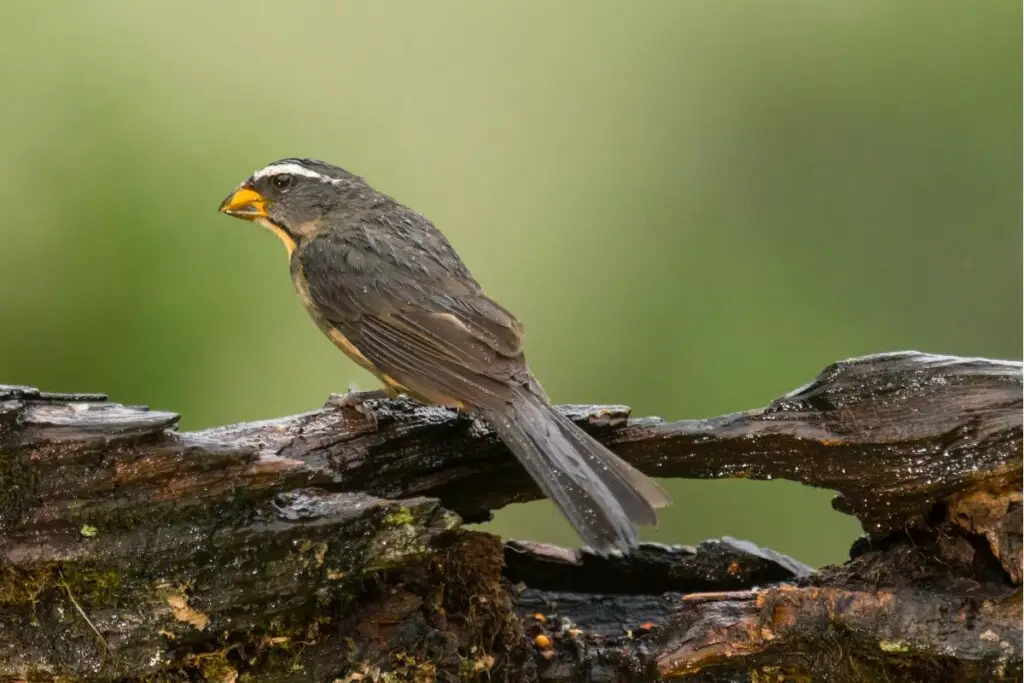
This Finch-like bird is a passerine (songbird) from South America. Slightly bigger than a finch at 21 cm (8.3 in.) in length.
The Thick-billed Saltator is considered a folivore which means it feeds primarily on the leaves of plants.
They will also eat fruits and flowers however there are two records of them consuming caterpillars which would ruin their title of folivore.

The world Saltator comes from the Latin saltator, saltatoris meaning “dancer.”
Rock Ptarmigan
The Rock Ptarmigan is a little bigger than the Thick-billed Saltator at around 34-36 cm (13.4-14.2 in.).
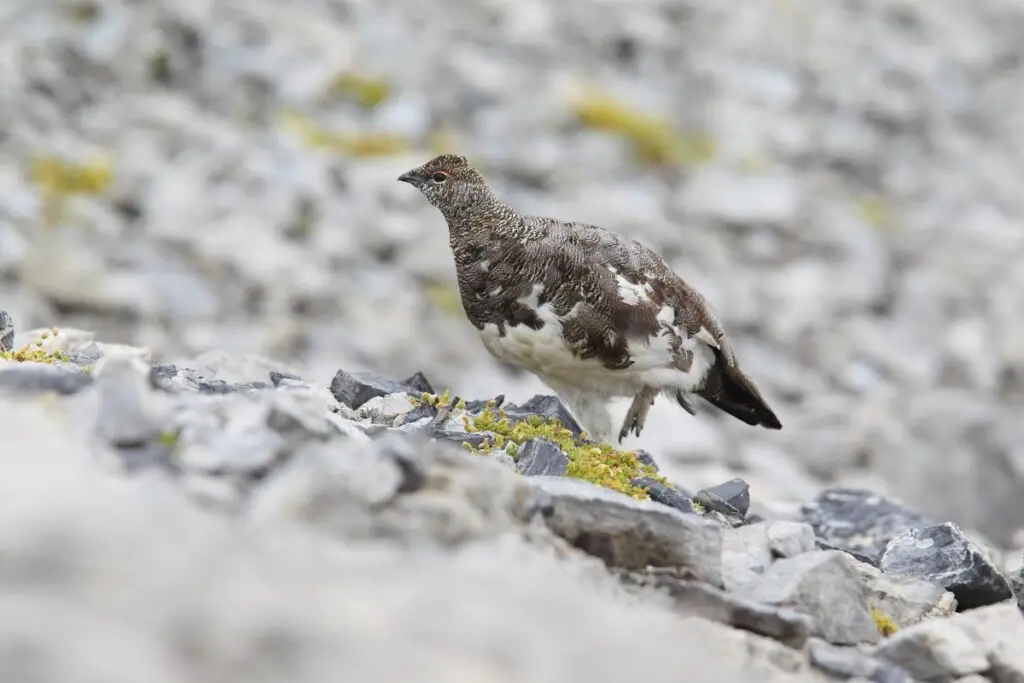
These birds are found in the arctic and alpine tundra regions of the Palearctic. 99% of their diet is plant material such as buds of arctic willow, mountain avens, white heather, and purple saxifrage.
In Japan, 93% of this bird’s diet is vegetable, 5% is animal matter, and the remaining 2% is grit (abrasive substances swallowed to aid digestion). It is possible that 5% of animal matter is simply insects accidentally ingested while feeding on plants.

In the winter, the dense feathered area of the Rock Ptarmigan’s feet increases their surface area by 400%.
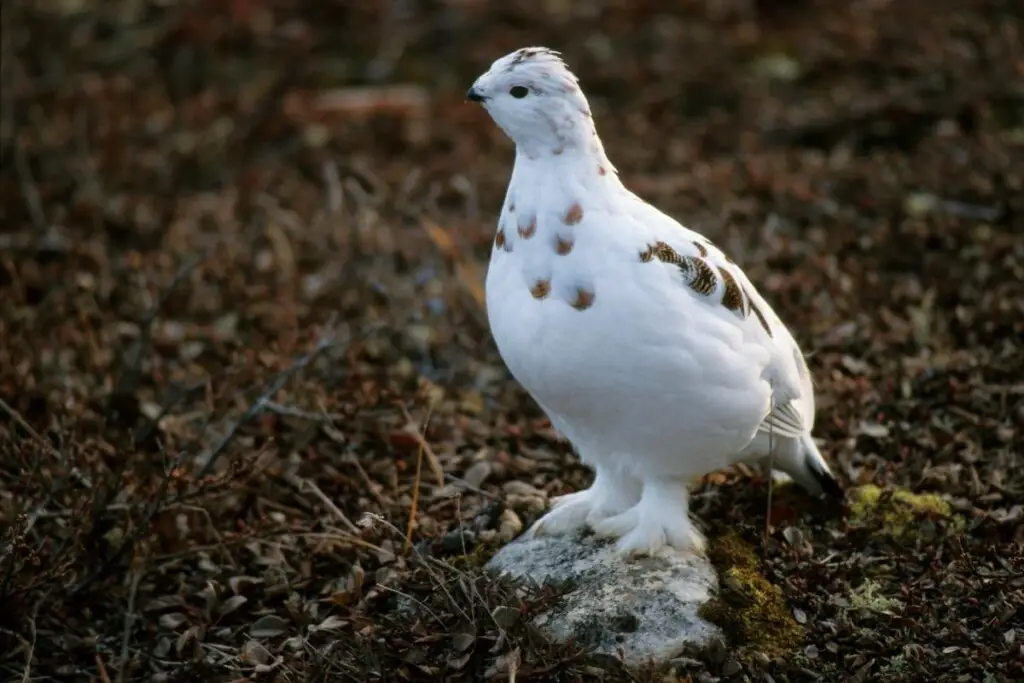
Small Birds That Are Carnivores
On two remote islands in the Galapagos lives a tiny bird with an unquenchable thirst for the blood of other birds.

In the deep, dark of night, it silently roams the terrain, searching for victims as they sit helplessly perched upon their nests. It creeps closer and closer, undetected, and then sinks its gleaming, pointed fangs into….ok, we’re only kidding?! Just trying to set the mood.
On Isla Darwin and Isla Wolf, two small islands in the Galapagos over 300kms northwest of the main island group, there is a Finch called the Vampire Ground-finch.

Like any other Finch, this one eats seeds, insects, and small vertebrates when the rain provides enough moisture for these things to be plentiful. During the dry season, however, this bird develops a taste for blood, and not only blood; it also feeds on freshly-laid booby eggs, partially digested fish regurgitate, and guano…yes…guano!
Vampire Ground-Finches will approach an unsuspecting Booby and begin plucking at its larger flight feathers until a bleeding wound opens up. Once the crimson sustenance begins flowing, it drinks the blood.
This does seem to bother the boobies as you can see in the video below from National Geographic, however, they don’t really try that hard to get rid of the Finches.
As gross as this seems, it’s a really clever survival technique on the finch’s behalf. As they can’t find the nourishment they need from their normal food sources, they get it from the only source available – other birds.
This has to be one of the most extreme examples of dietary adaptions in the animal kingdom.
References
- Individual bird information – Birds Of The World
- Food and Feeder Preferences of Common Feeder Birds – feederwatch.org
- Bird images sourced from Canva.com
- Additional bird sizing information – Wikipedia
